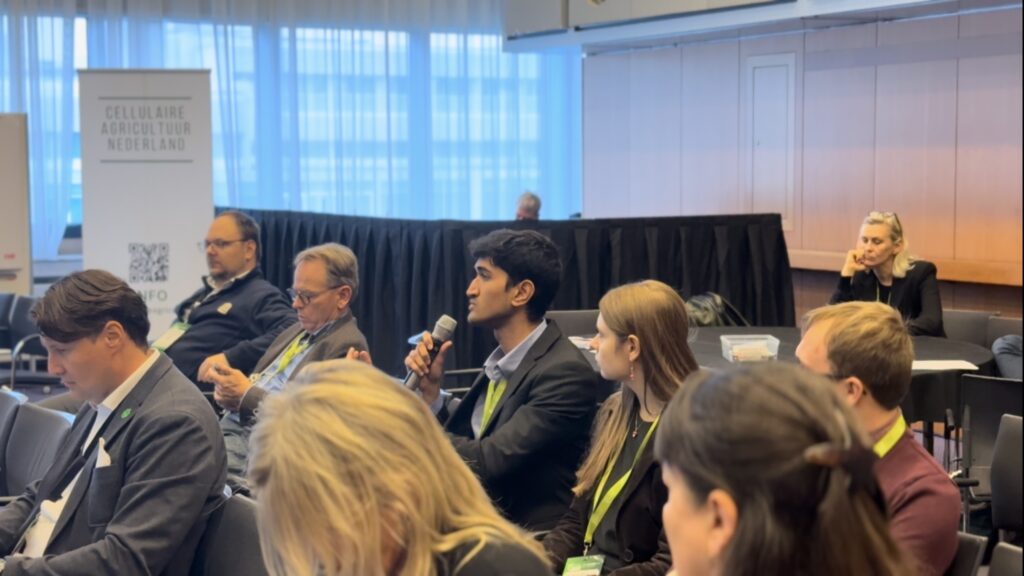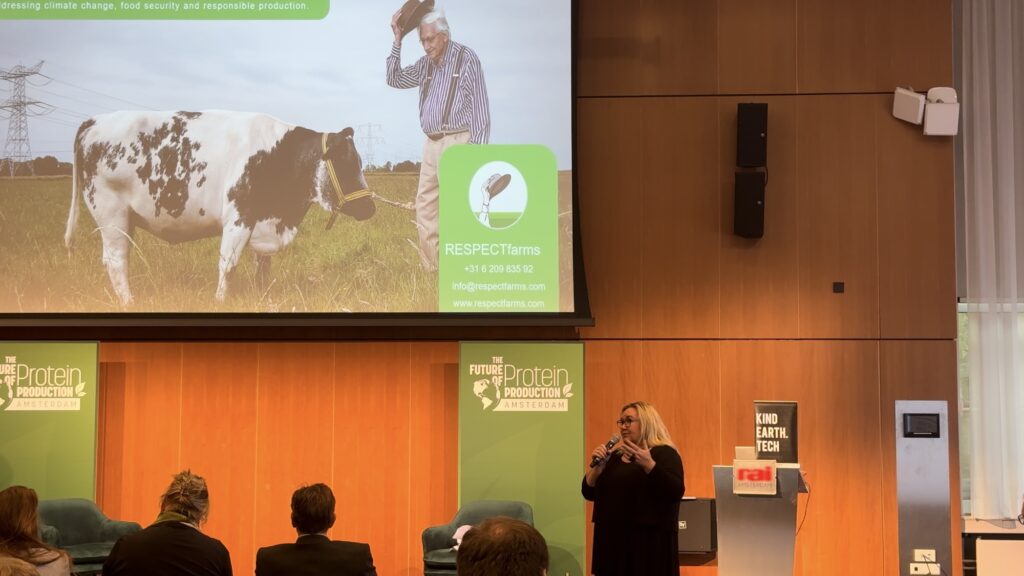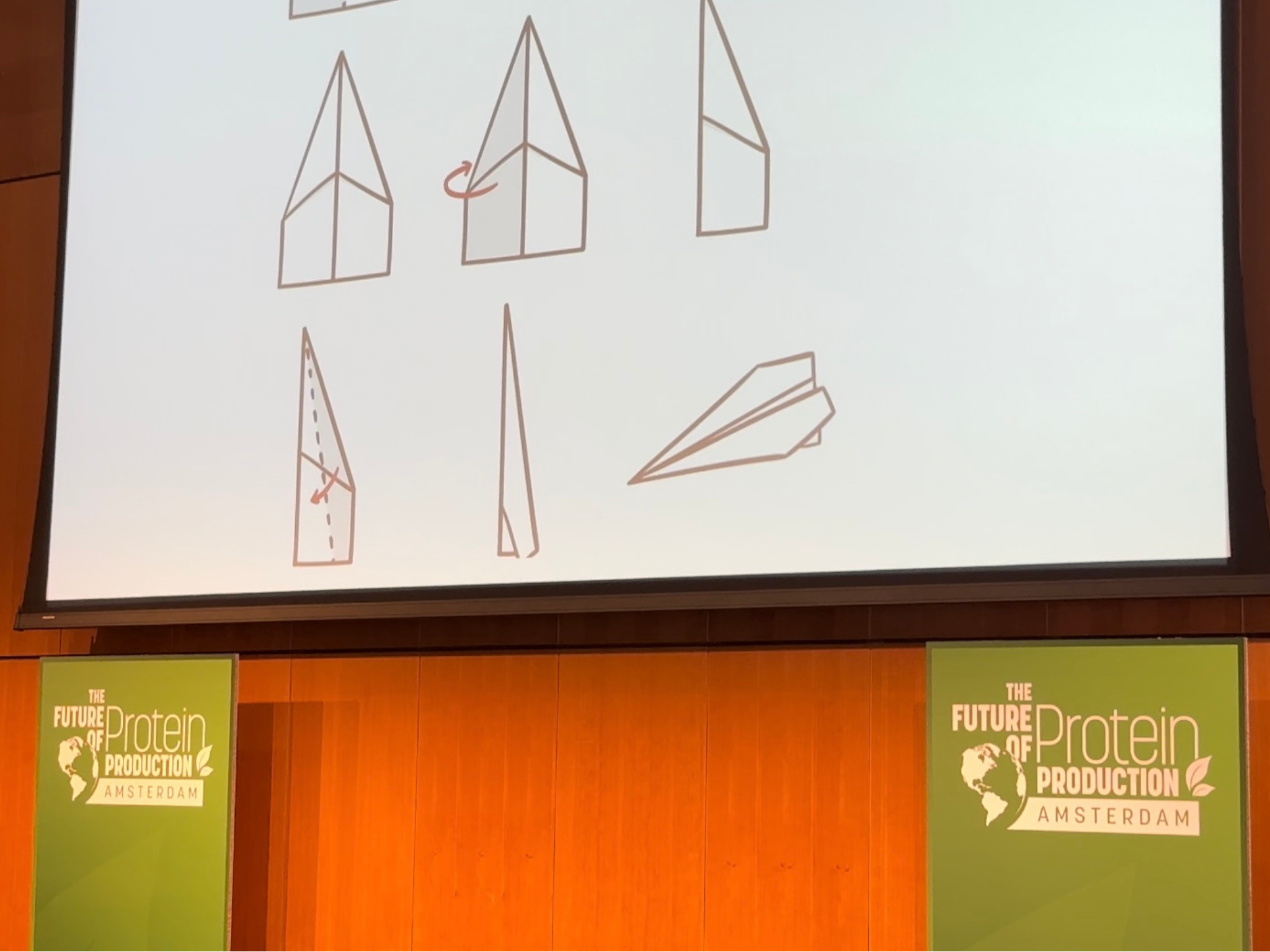5 Mins Read
A few weeks ago, at the Future of Protein Production conference in Amsterdam, thought leaders in sustainability and new protein production methods gathered to explore new pathways for the world’s protein needs.
Industry pioneers Ira Van Eelen from KindEarth.Tech and Ralf Becks from RESPECTfarms, along with Marcelo Beltrão Molento from the Federal University of Parana, held a compelling workshop: envisioning health and sustainability in farming through complementary protein sources.
The conversation covered the significant impact of industrial animal farming on ecosystems, particularly in the Amazon, and introduced RESPECTfarms’ vision: a future where farmers can continue to thrive as food providers and stewards of nature. This innovative approach promotes a future where traditional farmers and alternative protein advocates can collaborate rather than compete, emphasising that bridging these worlds is critical for sustainable food production.
Shifting the narrative around alternative proteins

Historically, alternative protein companies have marketed their products by highlighting the environmental and ethical issues associated with conventional agriculture, often using terms like “slaughter-free” or “animal cruelty-free.” While these messages address genuine concerns, they’ve also unintentionally deepened divides. As workshop participants noted, framing alternative proteins in opposition to traditional agriculture has reinforced an “us vs. them” mentality, risking alienation within the farming community.
In an engaging exercise, Becks encouraged participants to write their opinions on whether the future of protein should be “with animals” or “without animals” on paper aeroplanes and throw them to the front of the room. This activity highlighted the binary thinking that often permeates these discussions. The workshop then pushed for a shift in approach: rather than positioning alternative proteins as replacements, there’s potential to present them as “complementary proteins” – new options that coexist alongside traditional sources. “We face a huge challenge in creating a diverse protein mix that can feed tomorrow’s world,” Becks emphasised, “and all protein sources are needed.” This vision of complementary proteins can allow for a full spectrum of choices – animal meat, plant-based meat, and cultivated meat – empowering consumers to decide, while the industry focuses on making all options accessible, enjoyable, and affordable.
Participants then crafted a second paper aeroplane, this time writing down ideas for collaboration that could create a true “common ground” approach. Suggestions ranged from subsidies for farmers transitioning to complementary protein production, to hybrid protein solutions that combine traditional and alternative methods. A shared theme emerged: dialogue and collaboration with farmers, not around them, is key to moving the industry forward. Each idea underscored the belief that constructive, open exchanges can pave the way for a sustainable and inclusive protein future.

Building new business models for a resilient protein ecosystem
For RESPECTfarms, this vision translates into practical steps, such as creating new business models that integrate cultivated meat production within traditional agriculture. Their goal is ambitious: the world’s first cultivated meat farm where meat is grown directly from animal cells, with a vision to help decentralise cultivated meat production. This approach could enable farmers to produce cultivated meat alongside crops or livestock, fostering a system where small farms retain relevance and autonomy.
The current small scale of the cultivated meat industry could be well suited for early adoption by farmers. For many, starting with smaller production volumes – perhaps 500 litres – offers an achievable path to integrating cultivated meat into their existing operations. While larger centralised production methods, like those used by companies such as Mosa Meat (the technology partner for RESPECTfarms), may view this scale as a bottleneck, it may be an ideal entry point for smaller farms. In this sense, the RESPECTfarms project may hold greater short-term potential by providing a model that allows farmers to adopt cultivated meat incrementally while integrating it with traditional business models.
But does cultivated meat resonate with livestock farmers? It depends, noted Van Eelen, on each farmer’s motivation. Many farmers embrace animal farming because it’s a deeply rooted way of life, contributing to food security and supporting their local communities. Cultivated meat production doesn’t necessarily mean they have to abandon these values; rather, it offers an opportunity to produce meat differently, potentially in a way that brings additional economic and environmental benefits.
A balancing act: funding and infrastructure
Creating this shift won’t be easy. Becks noted that Dutch farmers currently receive around €795 million in government subsidies each year – a stark contrast to the €60 million invested in cellular agriculture through the Netherlands’ National Growth Fund. While this funding shows institutional support, it’s just a small fraction of what sustains conventional farming today.
To bridge this gap, Becks emphasised cooperation with existing meat distributors and leveraging their established networks in logistics, cold storage, and retail. Building a new protein ecosystem from scratch isn’t feasible. Instead, working alongside traditional industry players could enable cultivated meat to enter mainstream markets faster and more efficiently.

Involving farmers in the cultivated meat value chain
Research from the Royal Agricultural University reveals that farmers themselves are warming up to the idea of participating in cultivated meat production. By repurposing existing crops and byproducts, like feed wheat for glucose or rapeseed oil meal for amino acids, farmers can supply the cellular agriculture industry with essential ingredients. This dual role allows them to maintain some aspects of livestock farming, while diversifying income streams and reducing reliance on powerful intermediaries that often dominate traditional supply chains.
RESPECTfarms is aiming to optimise its first farm by 2029, and hopes to scale out from there. With a vision to transform 1,000 farms by 2038, RESPECTfarms hopes to spark a global movement.
The challenge lies in making cultivated meat appealing, affordable, and integrated into the existing protein ecosystem. For this to happen, the cultivated meat sector must acknowledge the complexities of farming and seek collaborative solutions rather than adversarial relationships.
Finding common ground
While the discussion highlighted the potential for collaboration, some audience members voiced doubts, questioning whether true synergy is possible given certain non-negotiable values. Nonetheless, there was a shared belief that dialogue is essential. Cultivated and conventional farming communities may not always see eye-to-eye, but building bridges can foster mutual understanding, paving the way for a protein-rich future that respects both tradition and innovation.
In Becks’ words, “We need to find common ground.” The foundation for this new protein future could be built on shared goals: healthier ecosystems, resilient food systems, and, ultimately, a more sustainable world where all sources of protein can coexist and thrive.




